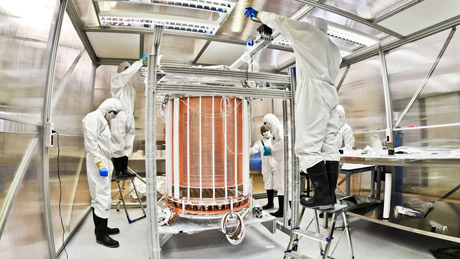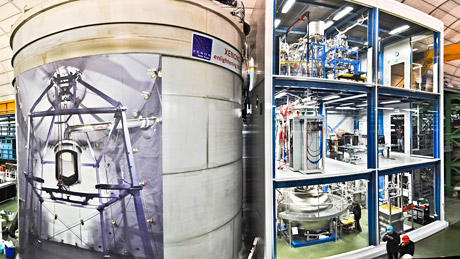Navigation auf uzh.ch
Navigation auf uzh.ch

Despite intensive research, no direct evidence of dark matter has thus far been produced. To date, it has only been observed indirectly via its gravitational pull. The new XENON1T detector could represent a key step towards finding direct evidence. An international collaboration of 21 research groups launched the project, with researchers from the Universities of Zurich and Berne taking part. UZH Physics Professor Laura Baudis played a significant role in the development and construction of the world’s most sensitive detector designed to search for dark matter.
XENON1T was inaugurated in Italy last week – in a massive hall deep below the earth in the Gran Sasso Underground Laboratory. The detector is shielded there from disruptive cosmic rays by 1,400m of rock, and it is installed inside an enormous water tank to protect it from radiation.

Thanks to precise cosmological observations, we know there is five times more dark matter than 'normal' matter. These dark matter particles are referred to as WIMPs, which stands for 'weakly interacting massive particles'. Some 100,000 WIMPs pass through and around every square centimeter of visible matter every second.

Within the international collaboration comprising 21 research groups, Laura Baudis’ team played a leading role in the development and construction of the time projection chamber in the XENON1T detector. This chamber is equipped with some 250 photosensors, which are designed to register the photons released when a WIMP collides with xenon atoms. XENON1T will be filled with the noble gas xenon in the coming months, and the measurements can then begin. Evidence of WIMPs would be a breakthrough, and would also mark a new beginning as the focus would then be on determining the properties of dark matter particles and clarifying their significance in the creation of the Milky Way.